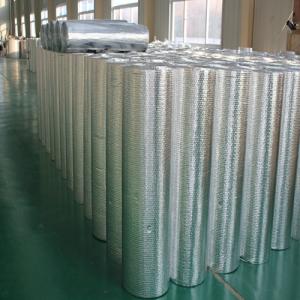When it comes to home and commercial HVAC systems, one of the most critical components is the ductwork. It’s the pathway through which conditioned air travels to and from your living spaces. But did you know that the efficiency of your duct system can significantly impact the performance of your HVAC system? That’s where CFM, or cubic feet per minute, comes into play. Understanding CFM, especially in the context of flexible ducts, is essential for optimizing airflow rates and ensuring that your heating and cooling system operates at peak efficiency.
The Basics of CFM
CFM is a measure of the volume of air that moves through your ducts each minute. It’s a crucial metric for determining the right size and capacity of your ducts to meet the needs of your space. Too little airflow, and your HVAC system will struggle to heat or cool your home effectively. Too much, and you could be wasting energy and money.
Why Flexible Ducts Matter
Flexible ducts are a popular choice for many homeowners and businesses because of their versatility and ease of installation. They can snake around obstacles and fit into tight spaces, making them ideal for retrofit projects or areas with unusual layouts. However, their flexibility also means they can sometimes be more susceptible to issues that affect airflow rates.
Common Issues with Flexible Ducts
One common issue with flexible ducts is that they can collapse or become blocked, reducing the amount of air that can pass through. This can happen due to poor installation, damage from rodents, or simply because the ducts are not supported adequately. Another issue is that they can stretch over time, which can also reduce their airflow capacity.
How to Measure CFM in Flexible Ducts
Measuring CFM in flexible ducts can be a bit tricky, but it’s not impossible. You’ll need a few tools, including a manometer, a duct probe, and a calculator. Here’s a simplified step-by-step guide to help you get started:
1. Prepare Your Equipment: Make sure all your tools are in good working order and ready to use.
2. Locate the Right Spot: Find a straight section of the duct where you can safely insert the duct probe.
3. Insert the Probe: Gently insert the duct probe into the duct and attach the manometer.
4. Take Measurements: Record the pressure reading from the manometer and the diameter of the duct.
5. Calculate CFM: Use the formula: CFM = (π/4) (D^2) (60/P), where D is the duct diameter and P is the pressure reading.
Improving Airflow in Flexible Ducts
If you find that your flexible ducts are not providing the optimal airflow, there are several steps you can take to improve the situation:
1. Check for Obstructions: Make sure there are no blockages in the ducts that could be restricting airflow.
2. Ensure Proper Support: Make sure your ducts are well-supported to prevent sagging or collapse.
3. Consider Duct Reinforcement: In some cases, reinforcing the ducts with a more rigid material can help maintain their shape and airflow capacity.
4. Regular Maintenance: Regularly inspect and clean your ducts to keep them in top working condition.
The Impact of Poor Airflow on HVAC Systems
Poor airflow in your ducts can have a ripple effect on your entire HVAC system. It can lead to increased energy consumption, reduced efficiency, and even equipment damage over time. By ensuring that your ducts are operating at the correct CFM, you’re not only improving comfort levels in your home or business but also prolonging the life of your HVAC system.
Personalizing Your HVAC Experience
While it’s essential to understand the technical aspects of CFM and ductwork, it’s equally important to remember that your HVAC system should serve your unique needs. Whether you’re looking to create a cozy atmosphere in your home or maintain a consistent temperature in a commercial space, your ductwork and airflow rates should be tailored to your specific requirements.
The Emotional Side of Comfort
Let’s not forget the emotional side of comfort. A well-functioning HVAC system not only keeps you physically comfortable but also contributes to your overall well-being. When the air is just right, it’s easier to relax, focus, and enjoy your environment. So, while we’re talking about airflow rates and technical jargon, remember that it’s all in the service of creating a space where you feel truly at home.
Wrapping Up
Understanding CFM in the context of flexible ducts is just one piece of the puzzle when it comes to optimizing your HVAC system. By taking the time to learn about and address the airflow rates in your ducts, you’re investing in the efficiency, effectiveness, and longevity of your heating and cooling system. So, the next time you’re considering an HVAC upgrade or dealing with performance issues, make sure to give those flexible ducts the attention they deserve.

